100th Anniversary Great Nave Tour at the Cathedral of St. John the Divine
Celebrate the 1925 construction of the stunning nave inside the world's largest Gothic cathedral!


Though New York City has changed drastically over the years, with modern skyscrapers, multi-million dollar structures and countless high-rises taking over the skyline, there are luckily still some buildings with rich histories that are hanging on. One is Chumley’s — which originally opened in 1922 and was a hot spot during Prohibition. And after a few bouts of openings and closings, it was restored to its former glory right in the same space that so much history has taken place in.
The Chumley’s that reopened in 2016 is true to its speakeasy history in the sense that it is still quite hidden. There is only an iron “86” on the door that names the building on Bedford Street, one you need to keep a sharp eye out to catch. And even though the renovation brought about a lot of changes, it is still the same physical space that is home to so many stories and hidden treasures.
Current co-owner of Bedford Street Hospitality, Alessandro Borgognone, said those stories are one of his favorite parts of owning the restaurant. “I love hearing that a customer’s parents met here, or drank here,” he said. “I love when people come through the doors and say to their kids, ‘I haven’t been here in 50 years.’ Every night you can count on at least one person having an old story to tell.”
Here are ten secrets of the New York City speakeasy icon:
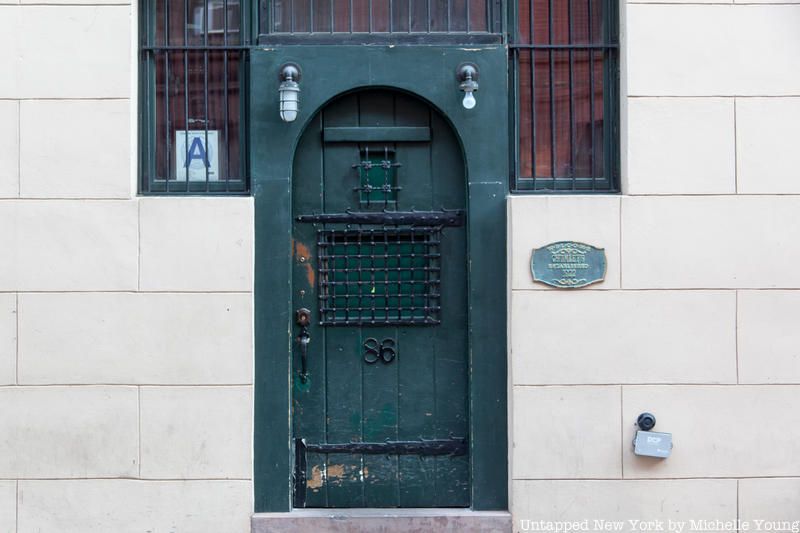
The main entrance was 86 Bedford Street, and though it is still rather hidden with no clear signage, back in the day there was also a secret entrance down Barrow Street and through Pamela Court, which you would have to enter through a courtyard. “It was just built that way,” Borgognone said. “58 Barrow Street is still accessible to us (used for emergencies only), but it leads out to what is now a private courtyard for the residents that live there.”
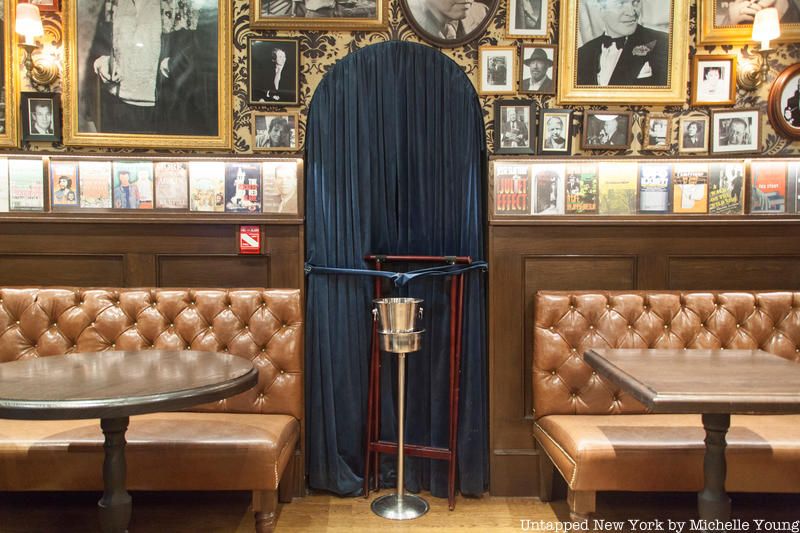
The former exit out to Pamela Court, now an emergency exit and alarmed
And perhaps there was one other, even more secretive entrance? The neighboring home at 17 Grove St.—one of the last remaining wood-framed houses in Manhattan—supposedly holds an underground tunnel that “once acted as a direct passage” to Chumley’s, according to the description from its realtor Jane Beal. This tunnel was also mentioned in a New York Times article from 1988, referencing Leland Chumley’s radical activities with the Industrial Workers of the World: “Should the Red Square come calling, there were four downstairs exits, a dumbwaiter to transport Wobblies to the second floor, and a tunnel to a house a block away.”
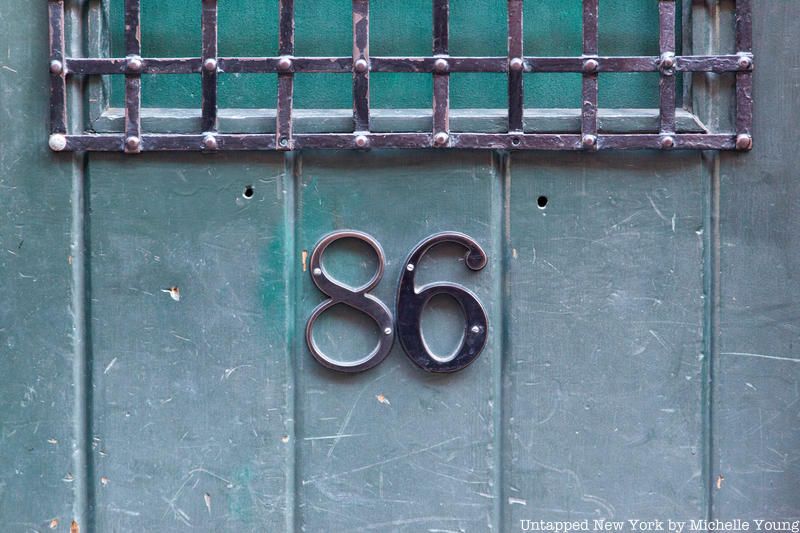
If you’ve ever heard the term to “86” something (I tend to think of a waitress at a diner telling the cook to “86 those pancakes”…ie, cancel them), you may not know it originated right here in New York City—though its original meaning is slightly different from how it’s used now.
“During Prohibition, the cops were on the payroll, so before they raided the place, they would call and say ‘86 your customers’ which was code for ‘send them out 86 Bedford Street,” Borgognone said. “And then they would come in the other entrance, at 58 Barrow Street. When the cops arrived, the place was empty.”
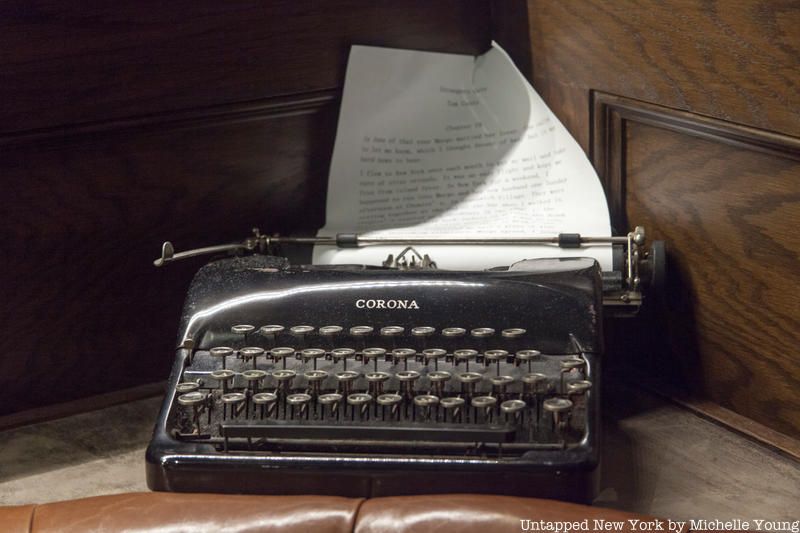
Pretty much since its opening, Chumley’s has been a haven for writers and authors. There are so many who spent time there, including but not limited to: Ernest Hemingway, Arthur Miller, Jack Kerouac, F. Scott Fitzgerald, J.D. Salinger, Ray Bradbury, John Steinbeck, E.E. Cummings, Edna Ferber, Eugene O’Neil, Ring Lardner and Max Eastman, according to a Chumley’s rep. This was something original owner Leland Chumley strongly encouraged, according to Borgognone.
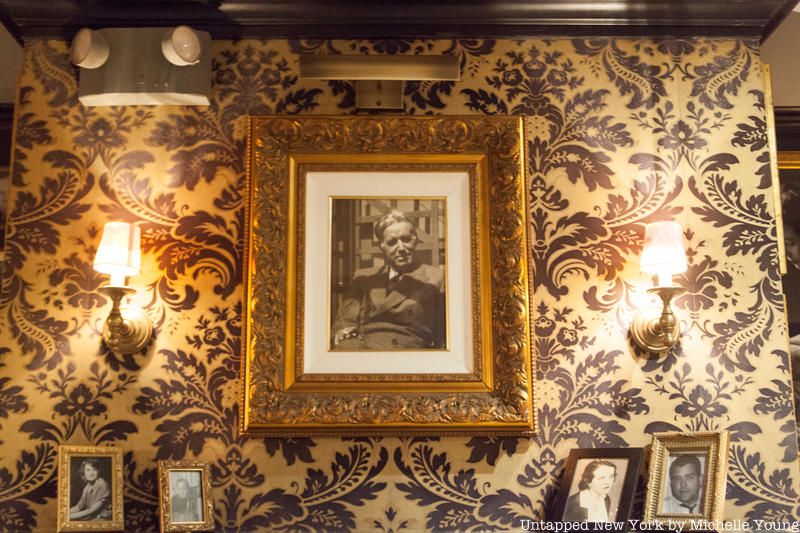
Photo of Leland Chumley
“Leland Chumley did,” he said, of what made the bar such a sought-after spot for literary types. “He considered himself a writer and befriended other writers.”Though, according to his obituary, he would only hang them after the writer’s second visit. We’re told that there is a photo in the back room that people frequently mistake for Leland Chumley, but the only photographic portrait of Chumley is prominently displayed in a gilded frame above the mantel (though there are two illustrations of him in the front vestibule as well).
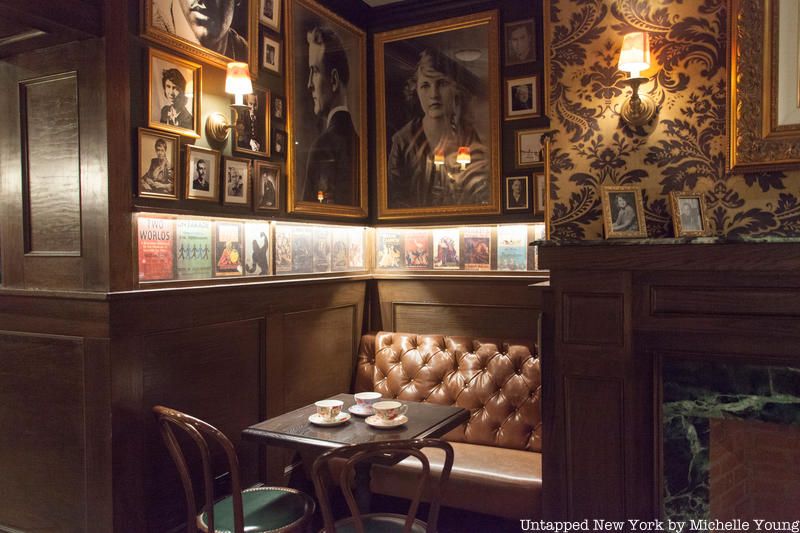
When the Fitzgeralds came to Chumley’s, they always sat at table 26. And since they were regulars, it soon became “their” table. Today, homage is paid with portrait photos of them hanging side by side, along with one of their wedding photos. People still request table 26 — and you can too, if you want to channel the iconic ‘20s couple. The cozy spot is just next to the fireplace.
We’re launching a new speakeasy tour of New York City soon. Sign up for early notice about this new tour here.
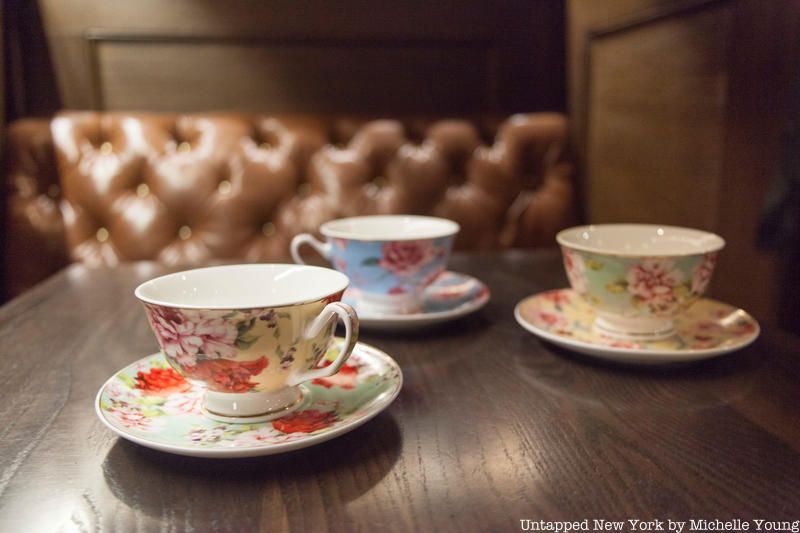
Since Chumley’s was such a popular spot during Prohibition, it often served alcohol hidden in items like brown paper bags and even tea cups. The current beverage director brought back that tradition for customers, with the tasty concoction called “This Side of Paradise” (featuring white rum, jasper’s mix, byrrh and lime) which is served in porcelain tea cups — though you don’t have to worry about hiding it anymore!
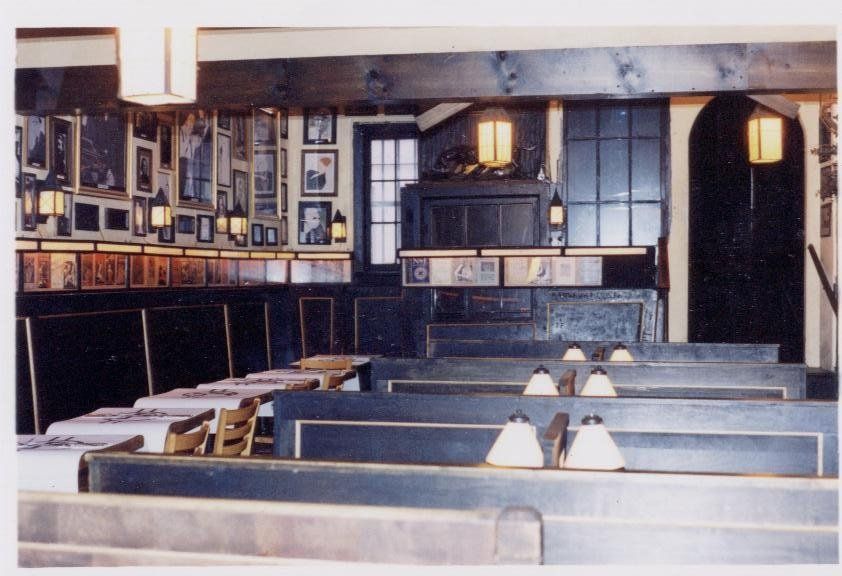
Chumley’s before, photo courtesy Chumley’s.
What ultimately led to Chumley’s closing in 2007 was a CHIMNEY crashing through the ceiling! Though no one was hurt, it marked a concrete issue that required work to be done, after years of being rather run down. Unfortunately, it also gave the opportunity for more logistical issues to come to the surface, like permits and petitions from neighborhood locals.
Though it took nearly 10 years, it is back now up and running — with a fancier menu, but with lots of the same charm and homey atmosphere still intact.
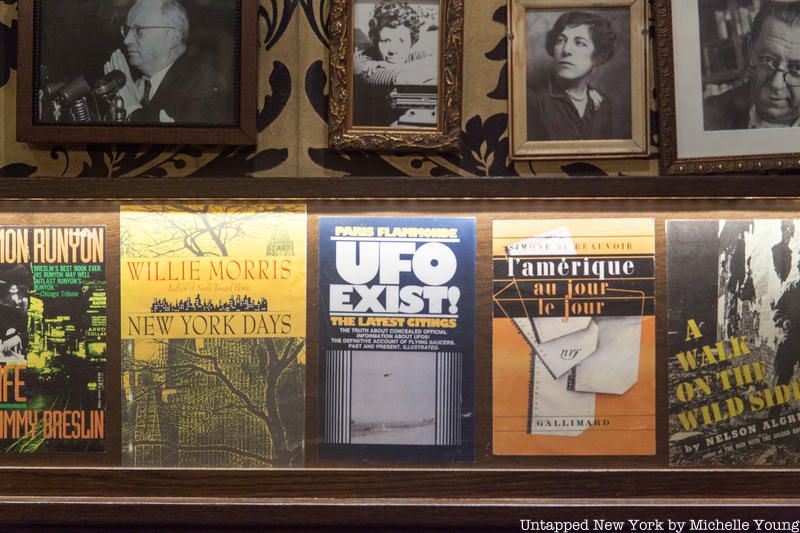
Because of its literary clientele, it was a tradition for Leland Chumley to paste up book jackets of his patrons on the wall once their works were published. This is a tradition that lasted through 2007, and something Borgognone wanted to replicate in the restored space.
Archivist James DiPaolo (more on him later) saved many jackets from the original building and helped restore it to its former glory, though some are only copies of the originals since many were destroyed over time. There are also over 200 faces of writers who visited in portraits along the walls (see how many you can name by sight when you go)!
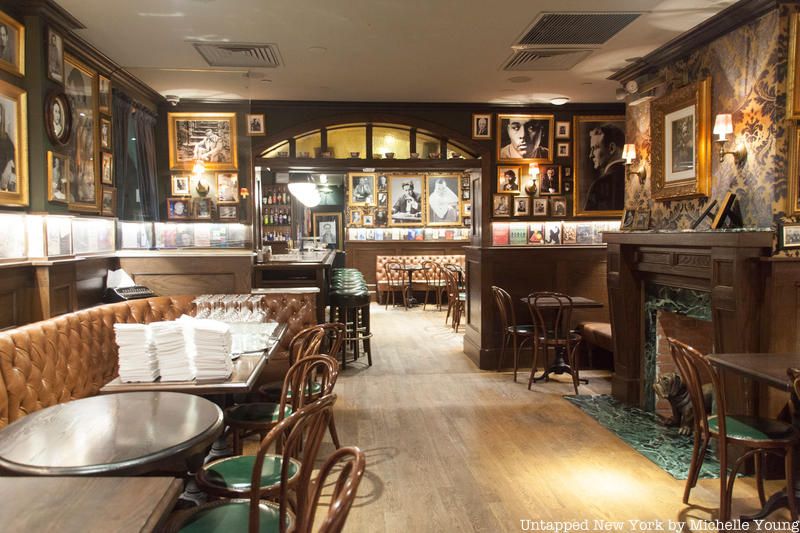
“The main difference is that prior to 2007,” Borgognone explained, “Chumley’s was a bar and now Chumley’s is a restaurant that has a bar. It also had never been known for its food.”
The kitchen is now helmed by Chef Heather Pelletier, who focuses on putting her spin on New York classics. She also has a rich background as a pastry cook, which you can see reflected on menu items like foie gras and chicken liver mousse “cannoli,” and lamb wellington made with baklava pastry. Since it wasn’t a restaurant until recent years, the aforementioned writers mainly came to write and to drink. The bar stocked one bottle of each liquor: one bottle of whiskey, rye, vodka, gin, etc.
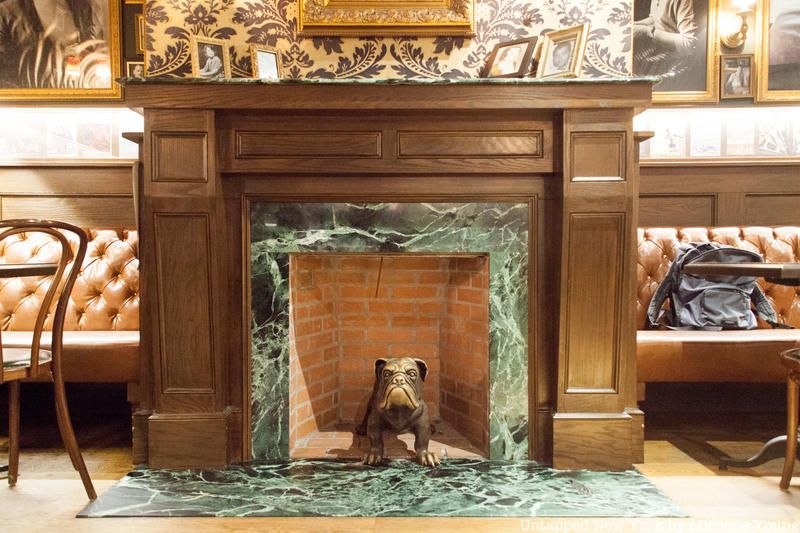
Historian and archivist James DiPaolo frequented Chumley’s throughout the ‘90s, and was even there when the chimney fell through. “We knew we wanted to keep the history alive and as an homage to the past, we kept the former book jackets and author portraits that had been hanging in Chumley’s since the beginning,” Borgognone said. He said the process was pretty seamless thanks to DiPaolo, who had been a customer for many years prior to its closure.
“Outside of the portraits and [book] jackets though,” Borgognone continued. “We wanted to restore the place and give it a little 1920s-centered glamour which we accomplished with the lighting, the marble frame on the fireplace, the leather banquets and the textured wallpaper.” Wondering about the bulldog in the fireplace? A former owner was a fan of bulldogs and the bronze sculptures are from that period, possibly a model of the owners’ actual dogs. Guests still come in and ask if the real bulldogs are still around, we’re told.
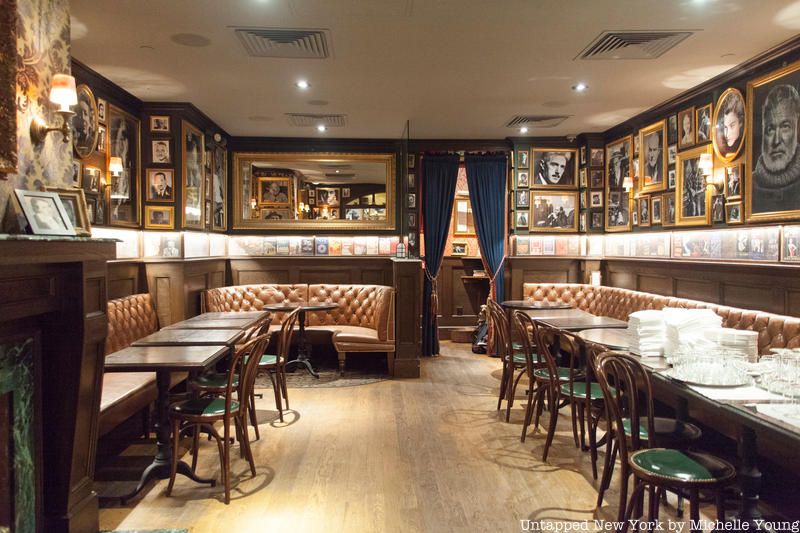
But it wasn’t all just fun and books. There were definitely some grittier stories from Chumley’s history. Newsweek reported that a chess match went astray in the bar in 1960 when a writer was killed by a sailor with a beer bottle. In 1964, a sculptor was mugged and then shot when leaving the bar. And in 1974, a heroin addict who had just committed a murder was found hiding in the Chumley’s boiler room. AND, last but not least, Leland Chumley’s wife’s ghost supposedly still haunts the place…
You can easily step back in time at Chumley’s, by booking a reservation online from their website. It’s great for a meal or just a drink at the bar. And sign up for advance notice of our new speakeasy tour!
#mc_embed_signup{background:#fff; clear:left; font:14px Helvetica,Arial,sans-serif; }
/* Add your own Mailchimp form style overrides in your site stylesheet or in this style block.
We recommend moving this block and the preceding CSS link to the HEAD of your HTML file. */
(function($) {window.fnames = new Array(); window.ftypes = new Array();fnames[0]=’EMAIL’;ftypes[0]=’email’;fnames[3]=’ADDRESS’;ftypes[3]=’address’;fnames[4]=’PHONE’;ftypes[4]=’phone’;}(jQuery));var $mcj = jQuery.noConflict(true);
Next, check out 10 of the Oldest Surviving Bars in Manhattan.
Subscribe to our newsletter